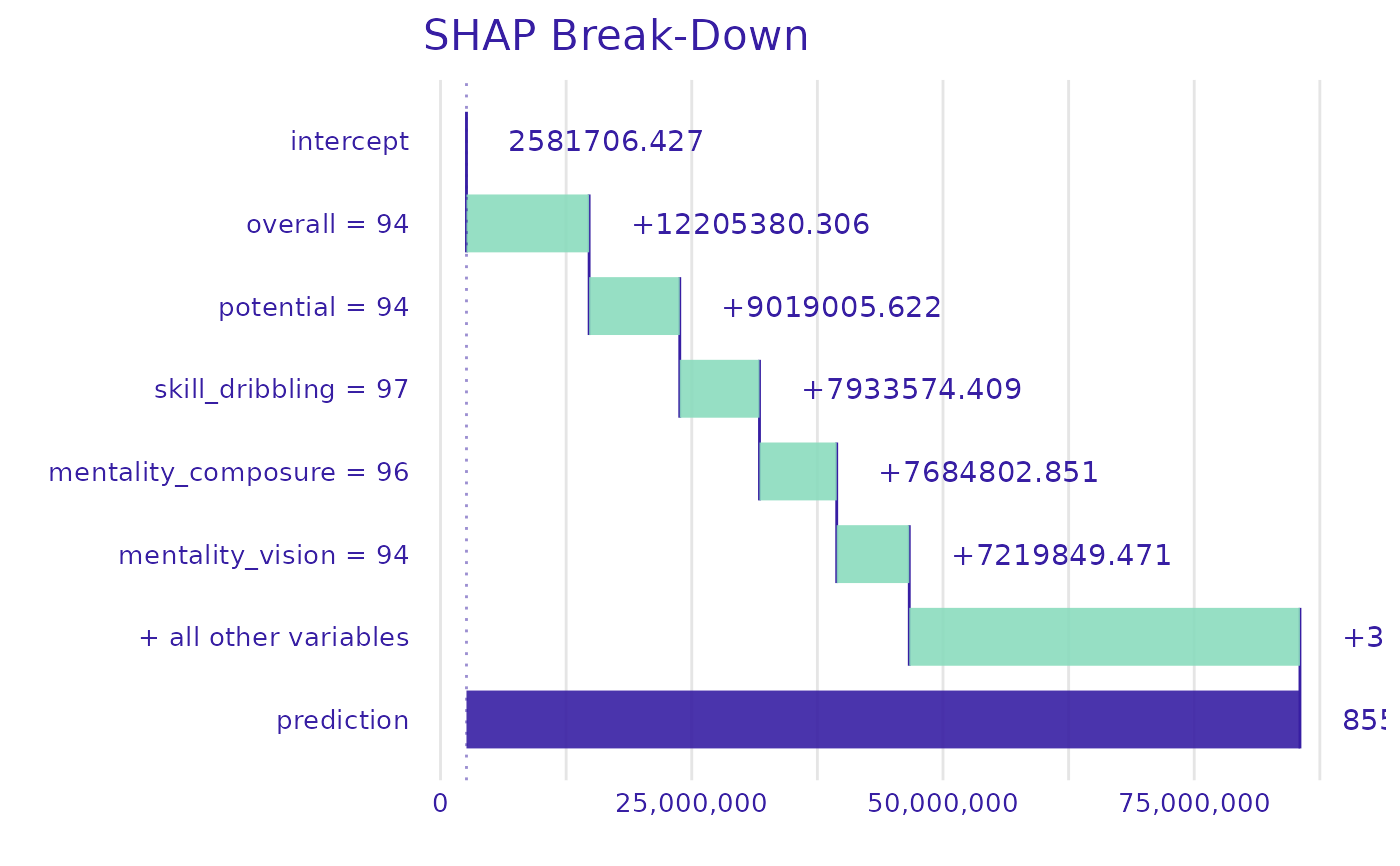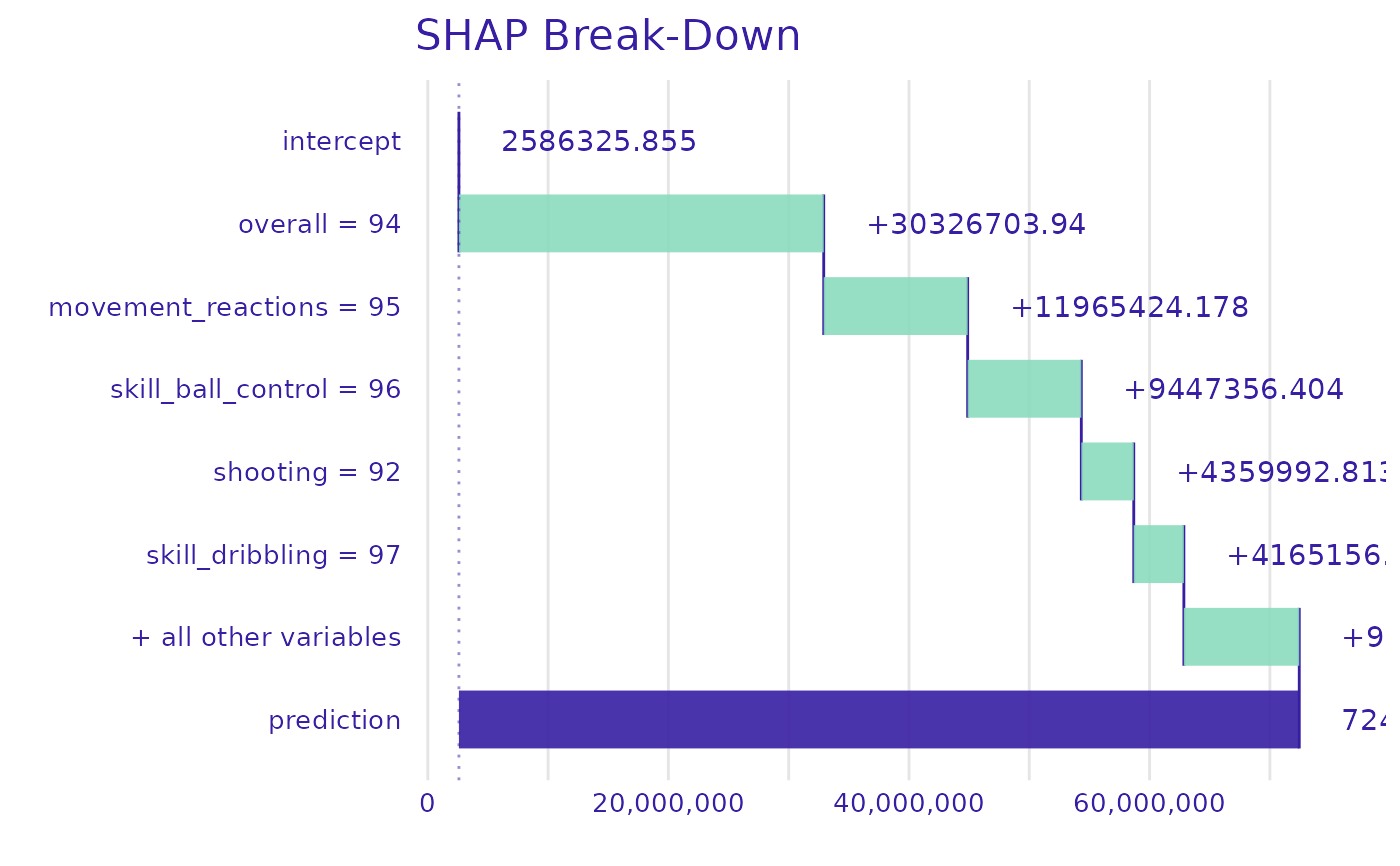Convert your tree-based model into a standardized representation.
The returned representation is easy to be interpreted by the user and ready to be used as an argument in treeshap() function.
unify(model, data, ...)Arguments
- model
A tree-based model object of any supported class (
gbm,lgb.Booster,randomForest,ranger, orxgb.Booster).- data
Reference dataset. A
data.frameormatrixwith the same columns as in the training set of the model. Usually dataset used to train model.- ...
Additional parameters passed to the model-specific unification functions.
Value
A unified model representation - a model_unified.object object (for single-output models) or model_unified_multioutput.object, which is a list of model_unified.object objects (for multi-output models).
See also
Examples
library(ranger)
data_fifa <- fifa20$data[!colnames(fifa20$data) %in%
c('work_rate', 'value_eur', 'gk_diving', 'gk_handling',
'gk_kicking', 'gk_reflexes', 'gk_speed', 'gk_positioning')]
data <- na.omit(cbind(data_fifa, target = fifa20$target))
rf1 <- ranger::ranger(target~., data = data, max.depth = 10, num.trees = 10)
unified_model1 <- unify(rf1, data)
shaps1 <- treeshap(unified_model1, data[1:2,])
#>
|0%----|------|20%---|------|40%---|------|60%---|------|80%---|------|100%
#> =---------------------------------------------------------------------- (0%)
====================================----------------------------------- (50%)
======================================================================= (100%)
plot_contribution(shaps1, obs = 1)
 rf2 <- randomForest::randomForest(target~., data = data, maxnodes = 10, ntree = 10)
unified_model2 <- unify(rf2, data)
shaps2 <- treeshap(unified_model2, data[1:2,])
#>
|0%----|------|20%---|------|40%---|------|60%---|------|80%---|------|100%
#> =---------------------------------------------------------------------- (0%)
====================================----------------------------------- (50%)
======================================================================= (100%)
plot_contribution(shaps2, obs = 1)
rf2 <- randomForest::randomForest(target~., data = data, maxnodes = 10, ntree = 10)
unified_model2 <- unify(rf2, data)
shaps2 <- treeshap(unified_model2, data[1:2,])
#>
|0%----|------|20%---|------|40%---|------|60%---|------|80%---|------|100%
#> =---------------------------------------------------------------------- (0%)
====================================----------------------------------- (50%)
======================================================================= (100%)
plot_contribution(shaps2, obs = 1)
